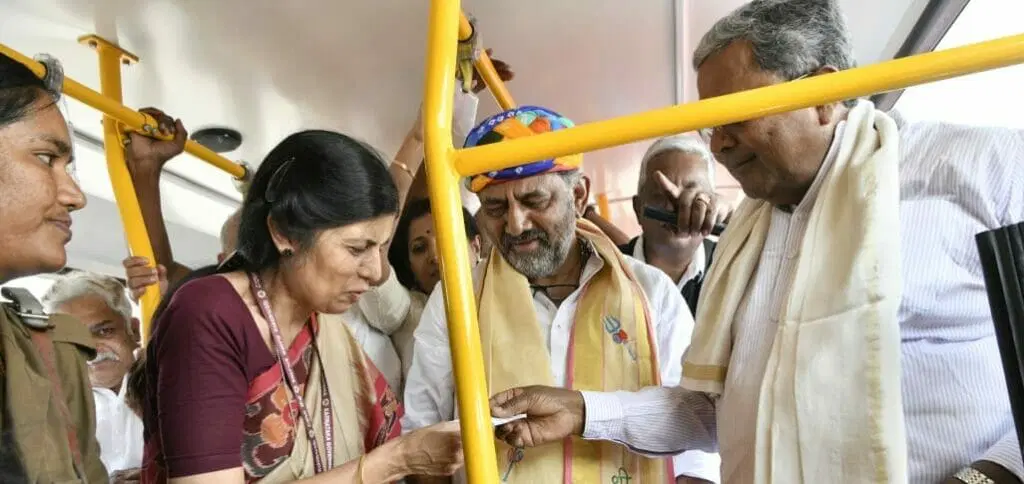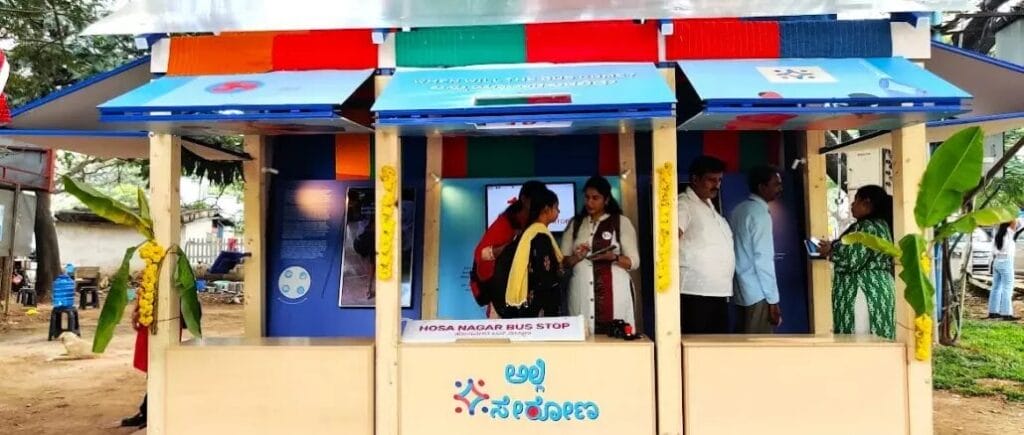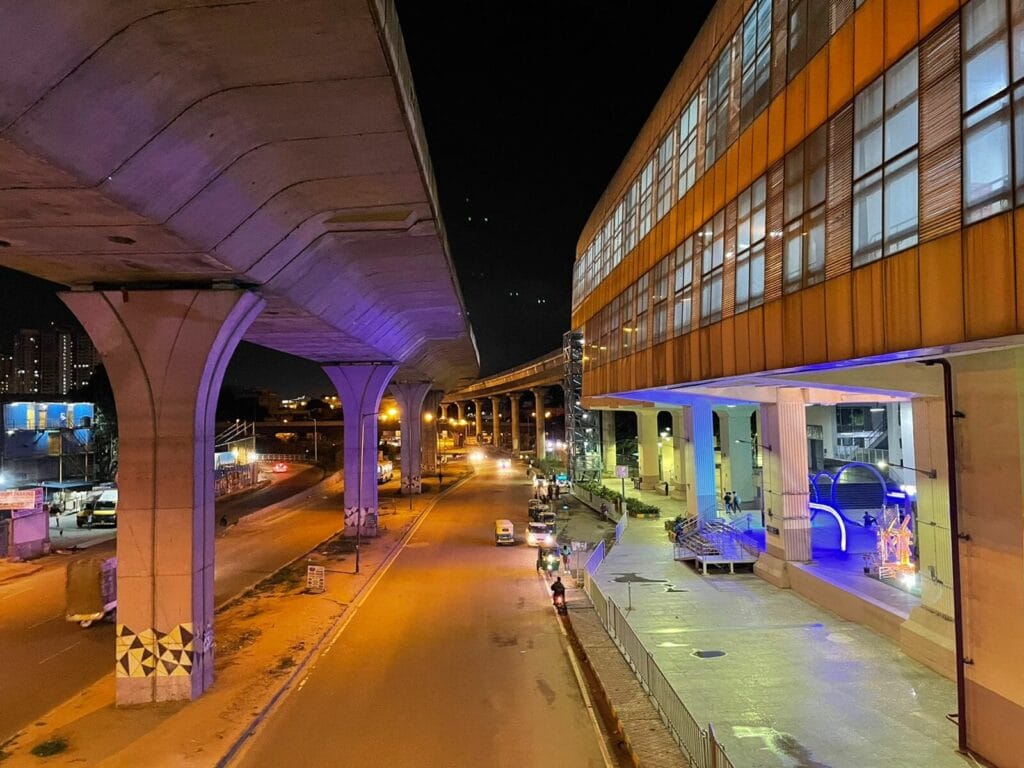This year marked several developments in Bengaluru’s public transport, from the introduction of the Shakti Scheme ensuring free bus travel for women in Karnataka to the completion of the Purple Line and the launch of the ‘Personal2Public Campaign’ to encourage metro use in the IT corridor.
However, even as there is optimism about improving public transport in the city, the progress of the suburban rail has been quite slow, the urban poor find using the metro unaffordable, and much more needs to be done to improve bus connectivity in the city. We look back on our coverage of public transport and the various gaps and loopholes that need to be addressed for a more promising 2024.
Namma Metro’s design safety issues
The year began on a tragic note. An under-construction metro pillar in HBR Layout, along the KP Puram- Airport stretch, collapsed on a mother-son duo, who succumbed to their injuries. To address pressing concerns about safety, Citizen Matters, Bengaluru, organised an event, ‘Living with metro construction’ to discuss safety and design standards with regard to the metro.
Living with the metro construction: Safety, pollution and accessibility concerns
Purple Line becomes operational, ‘Personal 2 public’ campaign
As the year progressed, there were some significant developments in Namma Metro. The Whitefield-Challaghatta Purple Line became fully operational. This development sparked hope that people would finally use the metro instead of private vehicles.
Even as around 40 lakh passengers use the bus and about five lakh people travel by Namma Metro, there is still some hesitancy in Bengaluru to choose buses and metro over cars and bikes. To understand why this is the case, Citizen Matters, Bengaluru, organised a webinar, ‘Why not public transport?’. The panelists discussed the significance of the Personal2Public (P2P) campaign, launched by World Resources Institute (WRI) India and the Bengaluru Political Action Committee (BPAC) this year, to encourage the IT corridor to switch to public transport twice a week.
“With more metro connectivity and buses being released in the city, the priority would be to focus on those who are extensively dependent on personal commute. We need conversion there,” observed panelist Srinivas Alavilli, Fellow, Integrated Transport and Road Safety, of WRI.
Hop on board with public transport
Open letter to DULT and BMTC
The event received a number of responses from citizens. We compiled citizens’ concerns and suggestions and published an open letter to the Directorate of Urban Land Transport (DULT) and Bangalore Metropolitan Transport Corporation (BMTC).
Shakti scheme introduced
After the Congress formed the government in Karnataka this year, one of their five guarantees, the Shakti Yojane was introduced in the state. Under this scheme, all women and transwomen domiciled in Karnataka can travel free in all regular government-run buses with their identity card being the only ticket for the ride. Specifically, women can travel for free in ordinary and express buses run by the Bengaluru Metropolitan Transport Corporation (BMTC), Karnataka State Road Transport Corporation (KSRTC), North Western Karnataka Road Transport Corporation (NWKRTC), and the Kalyana Karnataka Road Transport Corporation (KKRTC).
Several BMTC issues need to be resolved
However, senior journalist Bhanu Sridharan in her report highlighted how the BMTC currently does not have enough staff to manage its existing fleet. The corporation has not kept pace with the city’s growth. The state transport department claimed in a report that BMTC would need to add 4,028 buses to its fleet to match the demand.
BMTC needs more support for a sustainable free bus scheme
Lack of bus connectivity
BMTC bus connectivity has also been a problem, particularly in the peripheral areas of the city. In April this year, open data enthusiasts, at a datajam organised by OpenCity.in, found that outer assembly constituencies, like Yelahanka and Mahadevapura, had poor bus connectivity. These constituencies typically had fewer bus stops. They also often had lower frequency of buses compared to the older, central areas of the city, such as Chickpet and Shivajinagar.
Public data enthusiasts evaluate access to public transport in Bengaluru

Accessibility is another important issue. In many of the seven neighbourhoods, bus stops were either far or non-existent. Residents of Priyanka Nagar and Seegehalli in KR Puram, have to walk two kilometres to access the nearest bus stop. Residents of Chikka Banaswadi, CV Raman Nagar, have to walk half a kilometre to a bus stop with no shelter, seating, or visible signage.
Alli Serona art campaign
To highlight public transport issues, such as the state of BMTC bus stops and poor connectivity, Bhanu Sridharan reported about the a unique initiative-Alli Serona, which means ‘let us gather there’ in Kannada, a women’s collective that used art to campaign for better connectivity.
The name ‘Alli Serona’ was chosen by informal women workers as the name for the collective. This diverse collective includes self-help groups, artists, designers, civil society organisations and think tanks. The purpose of the collective was to ensure that the voices of informal workers, particularly women, are heard by policymakers.
Researchers, urban planners and artists collaborated with civil society organisations and self-help groups, which work with or comprise informal workers in Bengaluru. Together, they aimed to document the challenges that informal women workers face when commuting across the city. They used art to grab the attention of the officials and installed a mobile bus stop.
The collective includes women from eight neighbourhoods in the city: Hosa Nagar and Chikka Banaswadi in CV Raman Nagar, Priyank Nagar and Seegehalli in KR Pura, Byrasandra in Jayanagar, LR Nagar in Koramangla, AKG Colony and Vijayanagara in Mahadevapura.
Alli Serona: How a women’s collective used art to campaign for better bus connectivity
Namma Metro not equally accessible
While BMTC is working towards last mile connectivity to encourage usage of public transport, Namma Metro has also been seeing a considerable rise in ridership. 95% of the 3,855 respondents of the Personal2Public Bengaluru questionnaire said that they are keen to shift to using the Metro.
However, a study by researchers from the National Institute of Advanced Studies (NIAS), as reported by Bhanu Sridharan, found that the urban poor in Bengaluru do not prefer the metro even when it is located close to their homes. With the study being done prior to the introduction of Shakti Scheme, the numbers would have further dropped due to the free travel scheme.
Most of the people interviewed commuted regularly, but hardly anyone used the Metro. Only 4% of the residents living close to an existing metro station travelled by Metro while less than 1% of the people living near future metro stations currently used the metro. In wards with current and future metro stations, over a third of the residents interviewed said they walked as a way of commuting.
Bengaluru Metro is unaffordable for urban poor
The findings of the study are in sharp contrast to a survey conducted by BPAC and WRI this year as part of its ‘Personal 2 Public’ campaign. An online survey of over 3,000 respondents in Whitefield, Mahadevapura, Electronic City, and the Outer Ring Road (ORR) areas showed that most of the respondents currently used private vehicles but would prefer the Metro.
Suburban rail needs to be sped up
Even as Namma Metro makes progresses, the suburban rail, which could revolutionise public transport, is not being given the attention it deserves, observes Rajkumar Dugar.
Bengaluru Suburban Rail Project (BSRP) is the first project taken up under Government of India’s (GoI) new Suburban Rail Policy. From that angle, it is of national importance. How it pans out will have a bearing on future projects under this policy. Therefore, Bengaluru cannot afford to fail itself and the country. It could improve commute for 10 lakh residents, but after 37 months, only Corridor 2 is underway. And here, less than 16% work is done.
Bengaluru suburban rail: A ‘rail’y good project moving at snail’s pace
Looking ahead: Issues that need to be addressed
BMTC has released 37 feeder buses to connect the last mile gap between K R Puram Metro and Outer Ring Road and aims to add a total of 300 feeder buses by April, 2024. However, the delay in the opening of the Yellow Line and the lack of sufficient resources to make the Shakti scheme a success, could hamper developments in public transport.

